Plan Now, Succeed Later: The Why of Email Marketing
by Audrey Howes
Bestselling author Alan Lakein once said, “Planning is bringing the future into the present so that you can do something about it now.” We all start a new marketing season with the best of intentions, but somewhere along the way we realize we have forgotten to plan and end up scrambling in our marketing efforts. Email marketing is no different. Planning email campaigns as you prepare your marketing for the year is essential to email success.
To get you started on the planning path we’ve outlined 4 of the most common types of email campaigns: newsletters, promotions, invitations, and announcements. You’ll learn what they are, when to send them, and get a peek at some well-executed examples of each.
Newsletter
What is it? An email newsletter provides useful information and content to your audience. It can be tempting to fill a newsletter with promotions about your products, but you are likely to turn off your subscribers. Email newsletters are your chance to present yourself as an expert in your field. It is not about what you sell, it is about the expertise you can share so you can build trust towards making a purchase later or increasing customer loyalty. Provide content that can better the people or businesses you serve. Promotions can be included, but should be the unobtrusive, secondary focus.
When should I send it? Most companies send their email newsletters once a month. There are some who send weekly newsletters and some who send quarterly. You will need to decide first, what is manageable for your team and second, how often your audience wants to hear from you.
Here are two excellent examples of email newsletters.
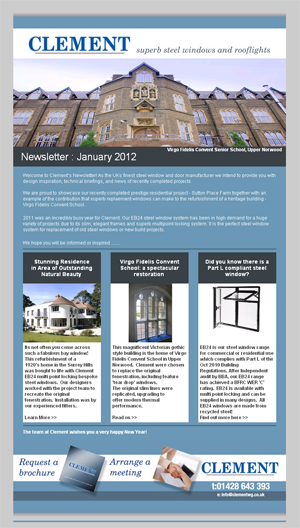 |
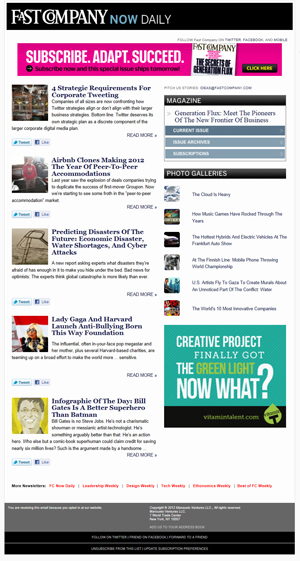 |
|
Why it Works:
|
Why it Works:
|
Promotion
What is it: Email promotions are targeted emails that highlight a specific product, general sale, tell a customer story, etc. The goal of email promotions is generally to increase sales and maintain brand awareness. Many email promotions come across as blatant advertisements. The most successful email promotions provide valuable content such as product reviews, customer experiences, problem/solution scenarios with one of your products as the solution or free samples or gifts. This content adds value to your customer, making the promotion more enticing.
When should I send it: Promotional emails can be sent at any time, but it is best to place them on your marketing calendar throughout the year to spread out your marketing opportunities. When generating your promotional emails, develop campaigns of multiple emails instead of a single email. As your inbox likely proves, promotional emails are sent more frequently around major holidays. Think about sending promotions around more obscure holidays to stand out from the crowd. Check out our email scheduling calendar for 2012 holiday dates.
Here are two great examples of email promotions.
 |
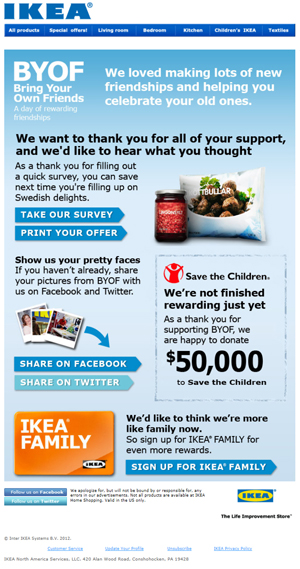 |
|
Why it Works:
|
Why it Works:
|
Invitation
What is it: Email is an excellent medium to extend an invitation to an event, webinar, group, etc. When an email invitation is opened, the invitee is likely within a few mouse clicks of their calendar. This allows them to quickly respond and add the date to their calendar. Email invitations give you excellent reporting and make it easy to collect responses. Take a look at our Event Marketing guide for more insight.
When should I send it: As you are planning events throughout the year, include sending email invitations on the to-do list. For a conference or larger event, you will likely want to start your email communication a few months in advance. For smaller events such as open houses, 4-6 weeks out is generally a great time to start inviting. If you are hosting events online such as webinars or chats, 1-4 weeks in advance is generally ample time to collect a good group of attendees.
Here are two stellar examples of an email invitation.
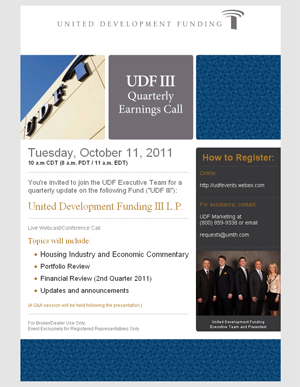 |
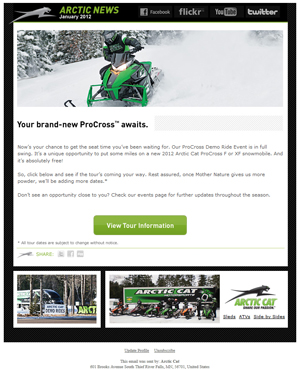 |
|
Why it Works:
|
Why it Works:
|
Announcement
What is it: Email announcements are a way to keep your contacts informed of what is going on in your business or in the world that directly affects your contacts. For example, if you hire a new staff member, send an email to announce the hire to your contacts with a brief bio about the person and their contact information. For businesses in specific industries such as travel or finance, send an announcement when weather may affect travel or when stocks jump. Announcements keep your business in front of your customers and instill confidence in your brand and expertise.
When should I send it: Announcements are the one type of email that can’t usually be planned for. Consider having a template designed and ready for when an announcement needs to be sent. Having a template at the ready prevents you from scrambling to write content and design a template. As an expert in your field, it is important to discern when sending an announcement will boost confidence or cause unnecessary worry.
Here is a great example of an email announcement.
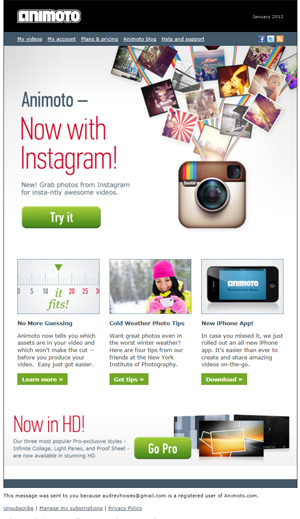 |
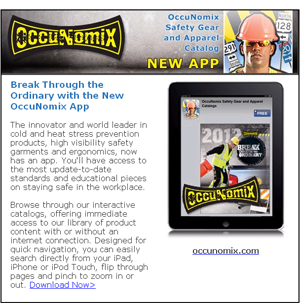 |
|
Why it Works:
|
Why it Works:
|
Now that you are familiar with the types of email marketing, sit down with your marketing team this week and add email marketing to your calendar. Consider creating several templates that match your brand so you are ready when it is time to hit send. By carefully planning your email marketing in tandem with your overarching marketing strategy, you will strengthen your marketing efforts exponentially!


